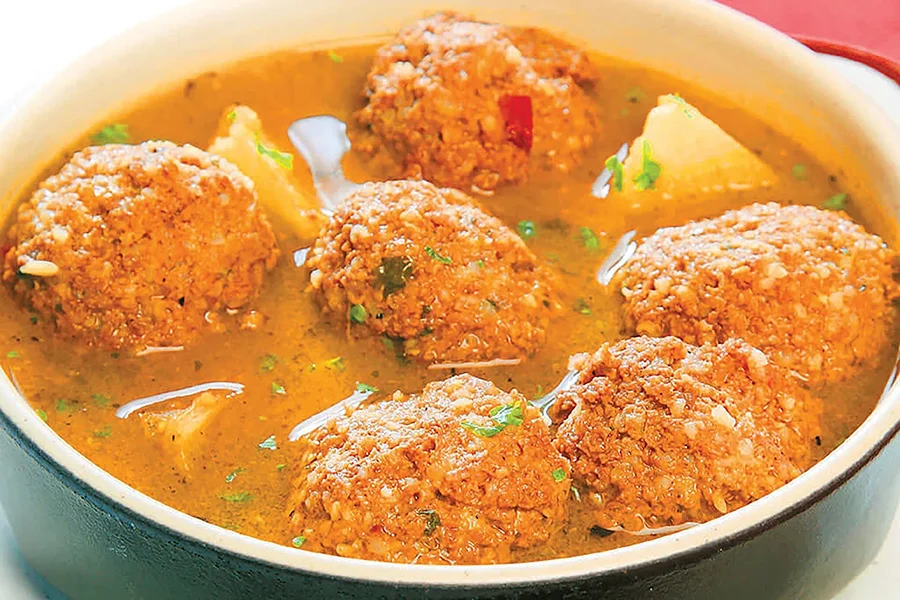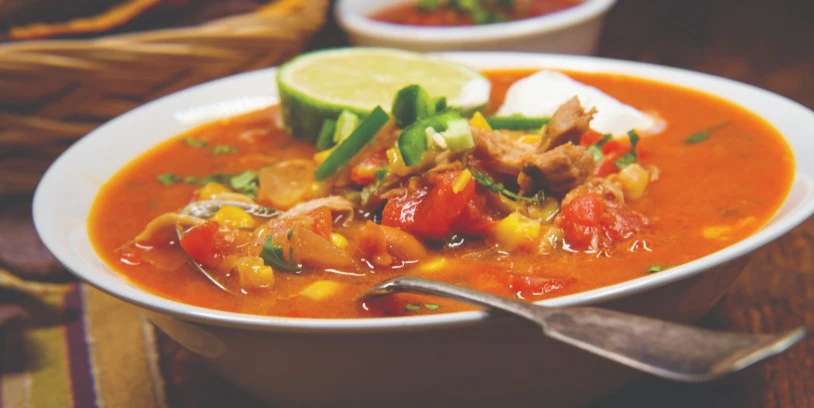It is unknown how many thousands of years ago soup dishes originated. However, the thought of Hispanic soup takes us back to memories of unique flavors we never forget, grandma’s cooking, and the traditional gastronomy of our countries.
Soup is a food rooted in tables around the world and, because of its unlimited potential to create, add, or season, whether in broth, cream, or thickened -as many of us like it- it has gained fame on menus, acclaimed by its fans, and recognized in cookbooks.
Table Of contents
The history of soup dates back to the Paleolithic period -more than 25,000 years ago- in Europe, when our ancestors began to immerse vegetables and pieces of meat in hot water to soften raw foods.
They put them in natural hollows in the rocks, later incorporating stones previously heated in the fire to achieve the cooking. This preparation gave them a significant contribution of calories, besides being very useful during the winter season.
Adding various ingredients and seasonings enriched the flavors and textures of the broths, giving shape to this food.
Western cuisine’s great soups only appeared in the 16th century when the kings Francis I and Henry IV of France incorporated stews into their delicacies. They were made with different game meats, boiled, and highly seasoned.
Over time, the different cultures incorporated the foods they had at their disposal, giving rise to dishes deeply rooted in the culinary history of cities, regions, and countries.
Classification of Soups
- Soups have a classification, according to the international culinary guide. These are some of them:
- Clear soup: Light-colored, thin-textured broth usually served with meat, seafood, or vegetables.
- Cream soup: Opaque-colored soup thickens by pureeing its ingredients or with a thickening agent.
- Vegetable soup: Thin textured soup prepared with various vegetables; 100% animal protein free.
- Puree: Prepared by simmering vegetables and starchy ingredients and making a more solid, coarse-textured preparation.
- Veloute: Velvety textured soup with egg yolks and cream used as a thickening agent.
- Bisque: Creamy soup prepared from seafood and then added a thickening agent.
Our Hispanic Soup Heritage
Soups are predominant in our culture and daily menu, an excellent warm-up to a main course and the main course itself.
In celebrating Hispanic Heritage Month, soups deserve recognition as they have created their distinction in Mexico, Honduras, Guatemala, and Costa Rica.
Let’s take a brief tour of some of Hispanic soups:
Mexican Soups
With a base of fish, beef, pork, or chicken broths combined with vegetables and corn, Mexican gastronomy has created a whole universe of regional variants that speak of its imagination and cultural richness.
Toltec soup. With nopal, one of the most representative ingredients of Mexican cuisine. It is a cactus whose fruits, prickly pear cactus, are sweet. This delicious dish includes onion, garlic, poblano peppers, tomato, corn, chicken broth, and tender nopales cut into small squares.
Red Pozole. Pozole is one of the most famous in Mexican cuisine, based on a special large-grain corn, cacahuacintle or pozolero corn, with a base of pork, onion, garlic and bay leaf, liquefied ancho, and guajillo chiles. The toppings are diced avocado, shredded lettuce, sliced fresh radishes, and chopped onion.
Tortilla soup. Also known as Aztec soup, the ingredients include broth of ground tomatoes, garlic, and onion, seasoned with epazote, and served with fried corn tortilla strips and pasilla chile, avocado, grilled or fresh cheese, and cream.
Related Article: Soup of “Cassava with Mojo”, Tasty at Any Time of the Day

Guatemalan Soups
Kak’ik. Declared an Intangible Cultural Heritage, it has turkey broth seasoned with roasted pepitoria, sesame, mint, and pepper. People can add tomato, miltomate, large pasa chili, red bell pepper, onion, and achiote. The whole plate can include avocado, rice, or white tamal.
Caldo Chirin de Amatitlan. Its main ingredients are a mixture of chicken, beef, fish, and seafood, seasoned with leek onion, vegetable and shrimp broth, river snails, chopped tomato, and eggs.
Honduras
Casserole soup. Preparation rich in beef protein, made from beef marrow bone broth and knuckle of beef, enriched with garlic, white onion, bell pepper, and achiote powder. Carrots, celery, cabbage, shelled corn on the cob and cut into pieces, green plantain, sweet plantain, yucca, zucchini, and potato are added. The sides are rice, tortillas, and avocado.
Bean soup with pork. It is one of the best Honduran soups because of the quality of its broth. The base is red beans and pork meat, vegetable pear or pataste -a typical Honduran vegetable-, green plantain, and yucca. People use tomato, white onion, green chili, and meat broth for seasoning. The sides include pork rinds, cheese, rice, tortilla, and lemon.

Costa Rica
Ropa Vieja Soup. It is the typical dish for a Sunday, based on milk, curd balls, and fried corn dough. White onion, sweet chili, garlic, achiote, and pepper are added to increase its flavor.
Meatball soup. Perfect preparation for a rainy and cold day, it rescues the beef meatballs as protagonists, mixed with corn flour and egg. The broth is made by slicing onion, chili, cilantro, carrot, and potato into thin strips and cooking them together. Add the meatballs and enjoy.
The variety of preparations of the typical soups of Central America is numerous, in addition to the enormous creativity put here by the hands of our ancestors, grandmothers, mothers, and chefs who, with the touch of each region, express history and show the diverse pantry of vegetables, tubers, condiments and mixtures that distinguish them.
Thank you, soups, for existing, for giving each country or region a way to remember it, to extend its tradition, delighting old and new generations with its colors, flavors, and warmth of home, irresistible to the palate, becoming one of the most consumed preparations in the world.


